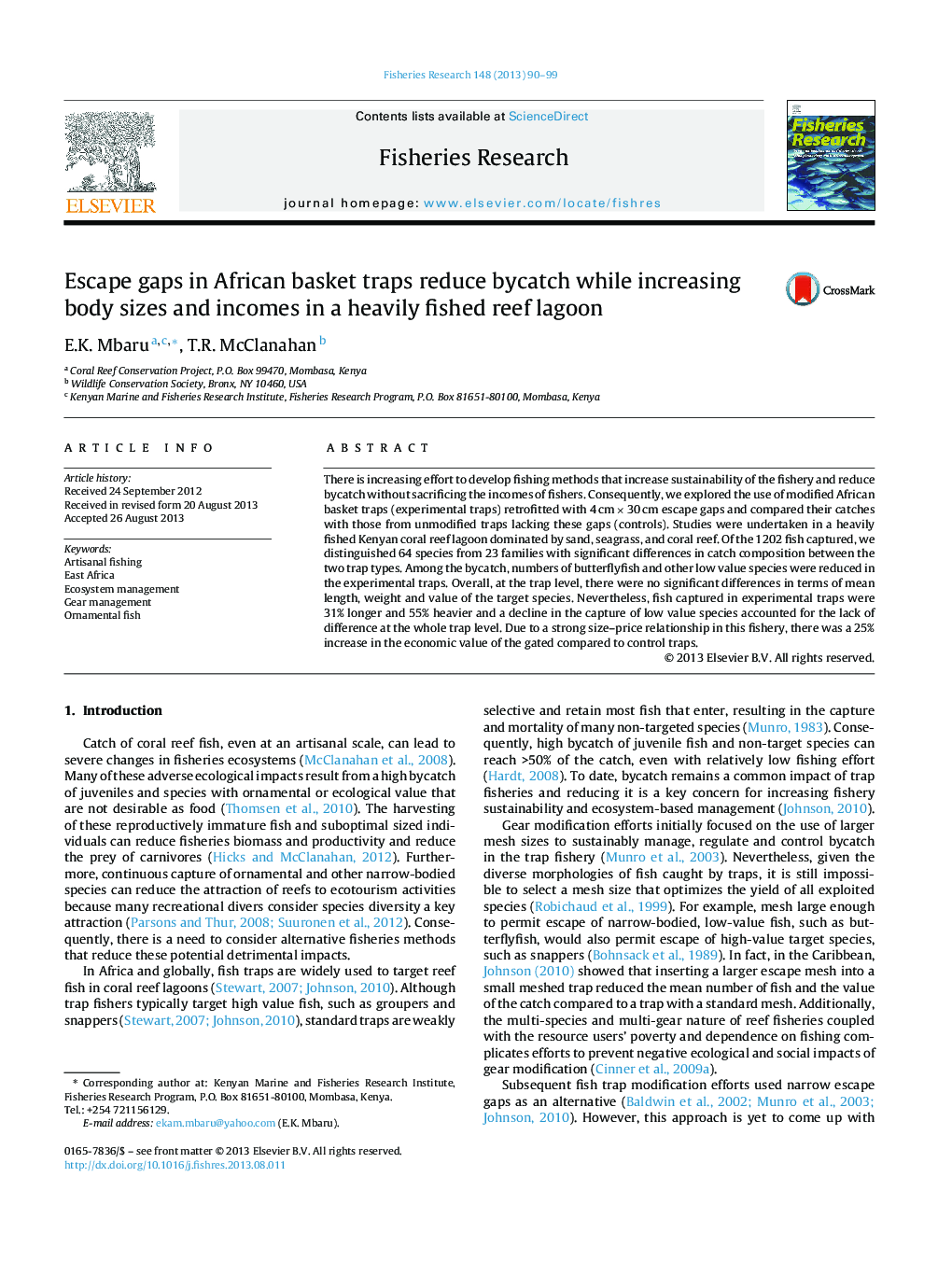| Article ID | Journal | Published Year | Pages | File Type |
|---|---|---|---|---|
| 6386048 | Fisheries Research | 2013 | 10 Pages |
Abstract
There is increasing effort to develop fishing methods that increase sustainability of the fishery and reduce bycatch without sacrificing the incomes of fishers. Consequently, we explored the use of modified African basket traps (experimental traps) retrofitted with 4 cm Ã 30 cm escape gaps and compared their catches with those from unmodified traps lacking these gaps (controls). Studies were undertaken in a heavily fished Kenyan coral reef lagoon dominated by sand, seagrass, and coral reef. Of the 1202 fish captured, we distinguished 64 species from 23 families with significant differences in catch composition between the two trap types. Among the bycatch, numbers of butterflyfish and other low value species were reduced in the experimental traps. Overall, at the trap level, there were no significant differences in terms of mean length, weight and value of the target species. Nevertheless, fish captured in experimental traps were 31% longer and 55% heavier and a decline in the capture of low value species accounted for the lack of difference at the whole trap level. Due to a strong size-price relationship in this fishery, there was a 25% increase in the economic value of the gated compared to control traps.
Related Topics
Life Sciences
Agricultural and Biological Sciences
Aquatic Science
Authors
E.K. Mbaru, T.R. McClanahan,
